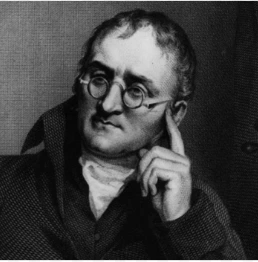![]() 16 Dec 2023
16 Dec 2023
In ancient times Indian and Greek philosophers have always wondered about the unknown and unseen form of matter. Around 500 BC, the idea of divisibility of matter was considered in India. Atoms and molecules are the fundamental building blocks of matter.
What Philosophical insights led to the emergence of Atoms and Molecules as Fundamental elements in the Study of Matter?
John Dalton

John Dalton was born in a poor weaver’s family in 1766 in England. He began his career as a teacher at the age of 12 and after seven years he became a school principal. In 1793, he left for Manchester to teach mathematics, physics and chemistry in a college. He spent most of his life there teaching and researching. In 1808, he presented his atomic theory which was a turning point in the study of matter.
<div class="new-fform">
</div>